
Roots
The sensation of our hair, its softness, its supple spring, is often taken for granted. We touch it, style it, live with it daily, yet rarely do we pause to consider the invisible forces that shape its very feel. Among these, the water we use for cleansing stands as a quiet, often overlooked, architect of our hair’s texture.
It flows from our taps, seemingly pure, yet often carries dissolved minerals that subtly, but surely, alter the inherent character of our strands. To truly grasp how hard water might shift hair’s natural feel, we must first descend to the elemental, to the very building blocks of water and hair, and observe their initial, silent meeting.
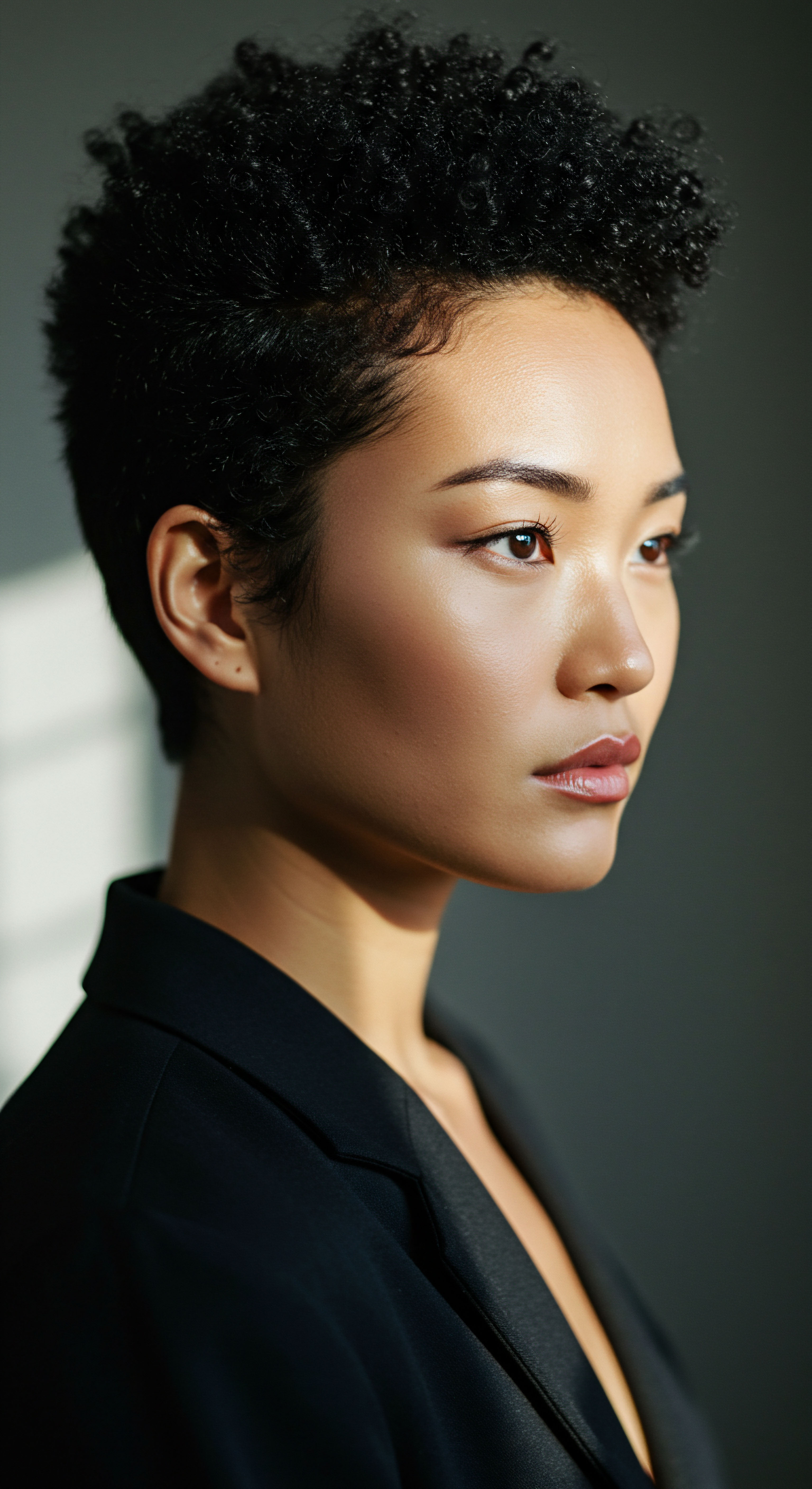
What Minerals Make Water Hard?
At its core, water’s “hardness” refers to its mineral content, specifically the concentration of dissolved bivalent cations. The most prevalent among these are Calcium and Magnesium ions. These minerals typically enter the water supply as it percolates through geological formations such as limestone and chalk, accumulating along its subterranean journey.
While harmless for consumption, their presence transforms the simple act of washing into a complex chemical interaction with our hair. Other metallic elements, though usually in smaller quantities, like iron, copper, and zinc, can also contribute to water hardness and affect hair over time.
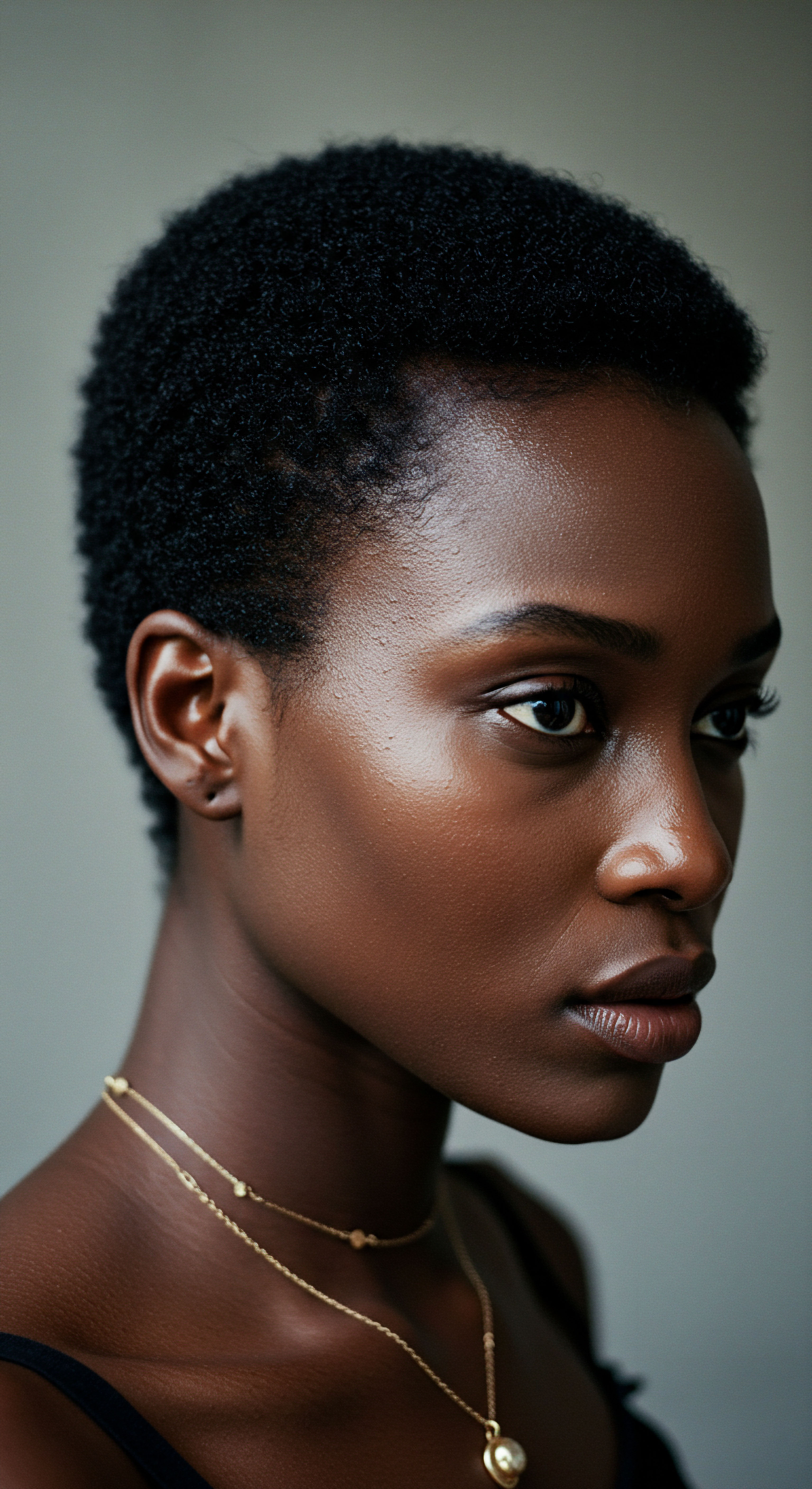
How Do Minerals Interact With Hair?
Hair, at a microscopic level, possesses a cuticle layer composed of overlapping scales, much like shingles on a roof. These scales, when healthy, lie flat, creating a smooth surface that reflects light and allows for easy movement. Hair also carries a slight negative charge, particularly along the edges of its cuticle and in areas that have experienced any degree of damage. The dissolved mineral ions in hard water, being positively charged, are naturally attracted to these negatively charged sites on the hair shaft.
This attraction leads to a deposition of these minerals onto the hair’s surface, forming an invisible, yet tactile, film. This mineral accumulation acts as a barrier, preventing natural oils and moisturizing products from fully penetrating the hair shaft.
The interaction between hard water minerals and hair begins at the cuticle, where positively charged ions cling to the negatively charged surface, creating an unseen mineral coating.
This coating, even in its nascent stages, can begin to compromise the hair’s inherent softness and pliability. It subtly roughens the surface, making individual strands feel less supple and more resistant to movement. Over time, this cumulative deposition becomes more pronounced, leading to noticeable changes in hair’s tactile quality.
| Mineral Type Calcium |
| Primary Chemical Form Calcium Carbonate (CaCO₃) |
| Observed Hair Effect Dullness, stiffness, difficulty rinsing, increased friction. |
| Mineral Type Magnesium |
| Primary Chemical Form Magnesium Sulfate (MgSO₄) |
| Observed Hair Effect Roughness, dryness, reduced lathering. |
| Mineral Type Iron |
| Primary Chemical Form Ferric Oxide (Fe₂O₃) |
| Observed Hair Effect Discoloration (brassy/orange hues), particularly on lighter hair. |
| Mineral Type Copper |
| Primary Chemical Form Copper Sulfate (CuSO₄) |
| Observed Hair Effect Greenish tint on lighter hair, color fading. |
| Mineral Type These minerals, though present in varying concentrations, contribute to the altered feel and appearance of hair exposed to hard water. |
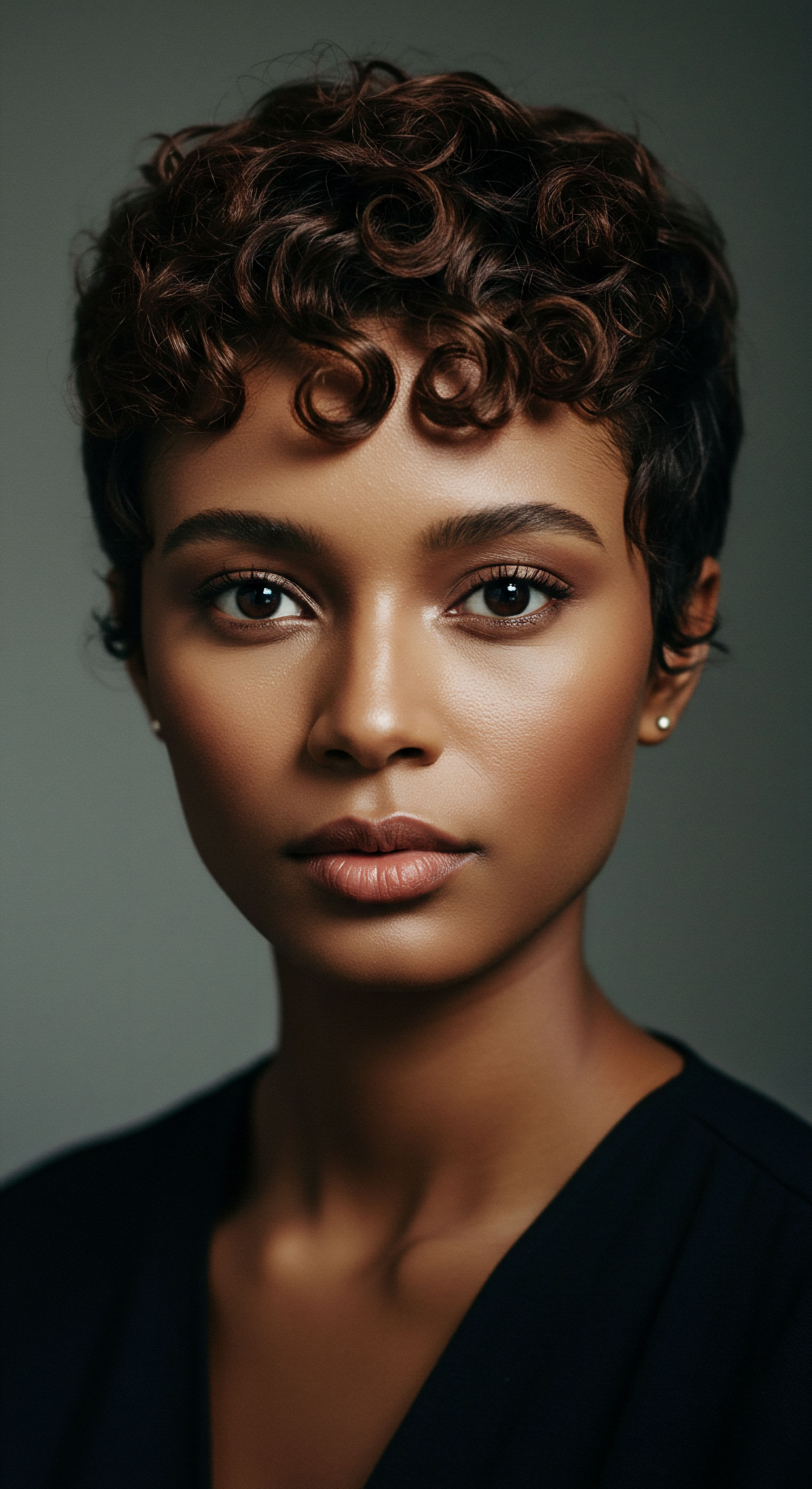
Ritual
Our daily hair care practices are more than mere routines; they are rituals, moments of connection and nourishment for our strands. Yet, when the very water we use within these rituals carries a hidden mineral burden, the efficacy of our gentle efforts can diminish. The familiar lather of shampoo, the silky glide of conditioner, the ease of detangling – all these tactile and visual cues can shift, signaling the quiet intervention of hard water. Understanding this interplay allows us to adjust our approach, preserving the integrity of our hair’s natural feel amidst environmental challenges.
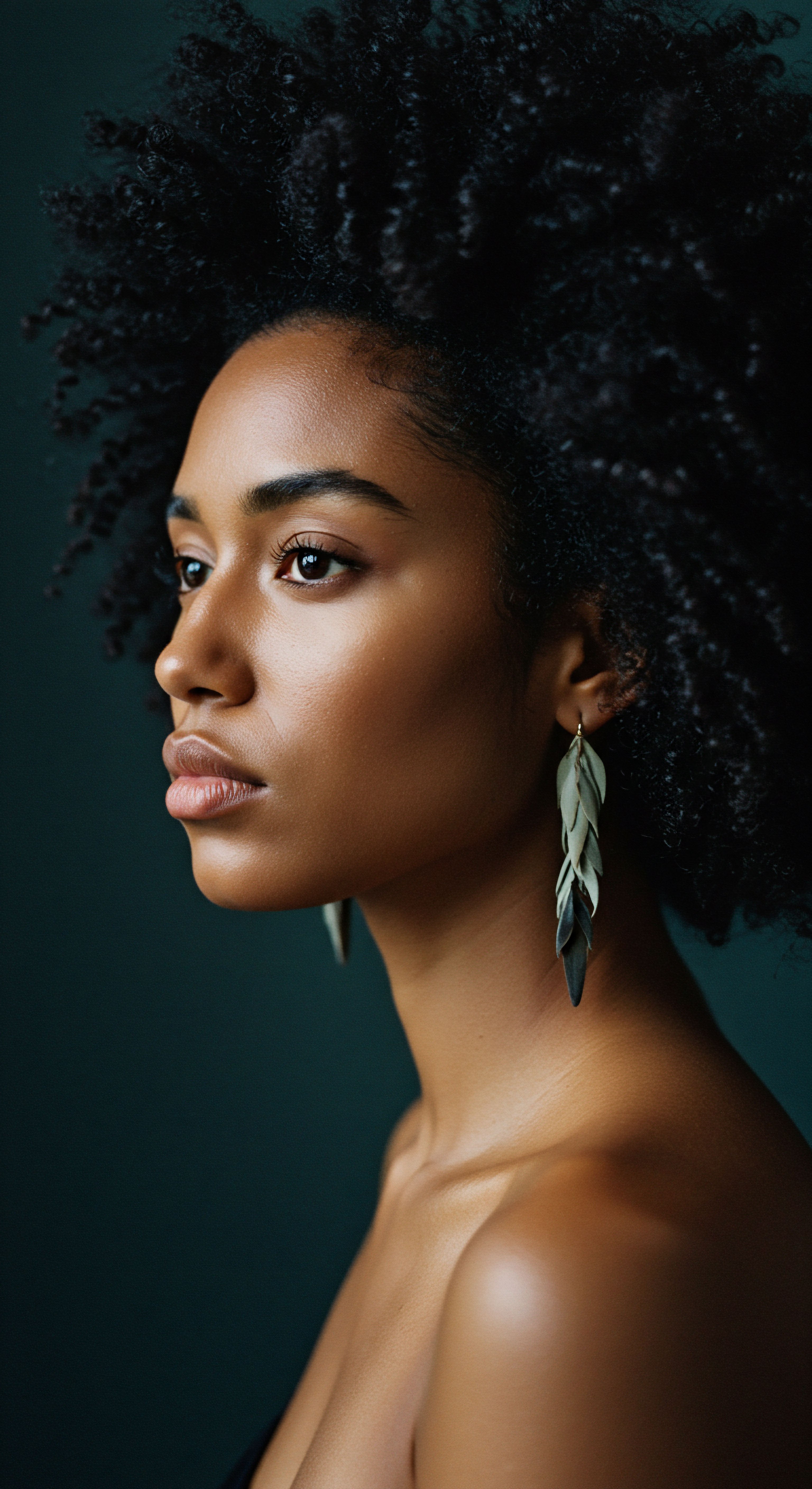
How Does Hard Water Impede Cleansing and Conditioning?
The presence of calcium and magnesium ions in hard water actively interferes with the performance of our hair care products. When shampoo meets hard water, these minerals react with the cleansing agents, forming a soapy scum rather than a rich, satisfying lather. This reduction in lather means that shampoos struggle to effectively lift dirt, oil, and product buildup from the hair and scalp. Consequently, hair may feel less clean, retaining a heavy or even greasy sensation, even after a thorough wash.
Beyond cleansing, hard water also presents a challenge to conditioning. The mineral film that coats the hair shaft acts as a physical barrier, hindering the absorption of moisturizing and conditioning agents. Conditioners, designed to smooth the cuticle and impart softness, find their work compromised.
Hair, therefore, remains dry, brittle, and resistant to the softening effects of even the most potent conditioning treatments. This leaves a lingering rough texture, far from the supple feel we seek.

What Are the Tangible Signs of Hard Water on Hair?
The impact of hard water often manifests in subtle, yet undeniable, changes to hair’s feel and appearance. One of the most common observations is a general lack of softness and increased friction between strands. Hair might feel Coarse, Stiff, or even Tacky, rather than flowing freely. This stiffness can make detangling a more arduous task, leading to increased breakage.
- Dryness ❉ Hair struggles to retain moisture, leading to a parched sensation.
- Dullness ❉ A lack of shine as the mineral deposits obscure the hair’s natural luminosity.
- Tangling ❉ Increased friction between strands makes hair more prone to knots and snags.
- Reduced Lather ❉ Shampoos struggle to foam, requiring more product for a perceived clean.
- Color Fading ❉ Minerals can interact with hair dyes, causing color to fade more quickly or shift tone.
- Scalp Irritation ❉ Mineral buildup can lead to dryness, itchiness, or flakiness on the scalp.
These tactile and visual cues collectively signal that the water itself may be influencing the hair’s inherent qualities, necessitating an adjustment in our care practices.
Hard water disrupts the harmony of hair care, diminishing product efficacy and leaving hair feeling less supple and more resistant.

Can Shower Filters Truly Soften Water for Hair?
While a whole-house water softening system provides the most comprehensive solution by removing minerals from all water sources, installing a Shower Filter offers a more accessible and often effective alternative for hair care. These filters attach directly to the showerhead and are designed to reduce the concentration of certain minerals, like calcium and magnesium, as well as chlorine and other impurities, before the water reaches your hair.
The effectiveness of shower filters varies depending on their design and the specific mineral content of the local water supply. Some filters use a KDF (Kinetic Degradation Fluxion) media, which can reduce chlorine and some heavy metals, while others might incorporate activated carbon or ion-exchange resins to target hardness minerals. While they may not achieve the same level of softness as a full home system, many individuals notice a significant improvement in their hair’s feel and manageability after installing one. The hair often feels cleaner, softer, and less weighed down, and styling becomes easier.
| Characteristic Feel |
| Hard Water Impact Coarse, stiff, rough, sticky. |
| Soft Water Impact Smooth, soft, pliable. |
| Characteristic Lathering |
| Hard Water Impact Poor, requires more product. |
| Soft Water Impact Rich, abundant, efficient. |
| Characteristic Moisture Retention |
| Hard Water Impact Hinders absorption, leads to dryness. |
| Soft Water Impact Promotes hydration, allows natural oils to penetrate. |
| Characteristic Shine |
| Hard Water Impact Dull, lackluster. |
| Soft Water Impact Vibrant, luminous. |
| Characteristic Detangling |
| Hard Water Impact Difficult, increased tangles. |
| Soft Water Impact Easier, reduced knots. |
| Characteristic The water type profoundly shapes the daily experience of hair care and the ultimate tactile outcome. |
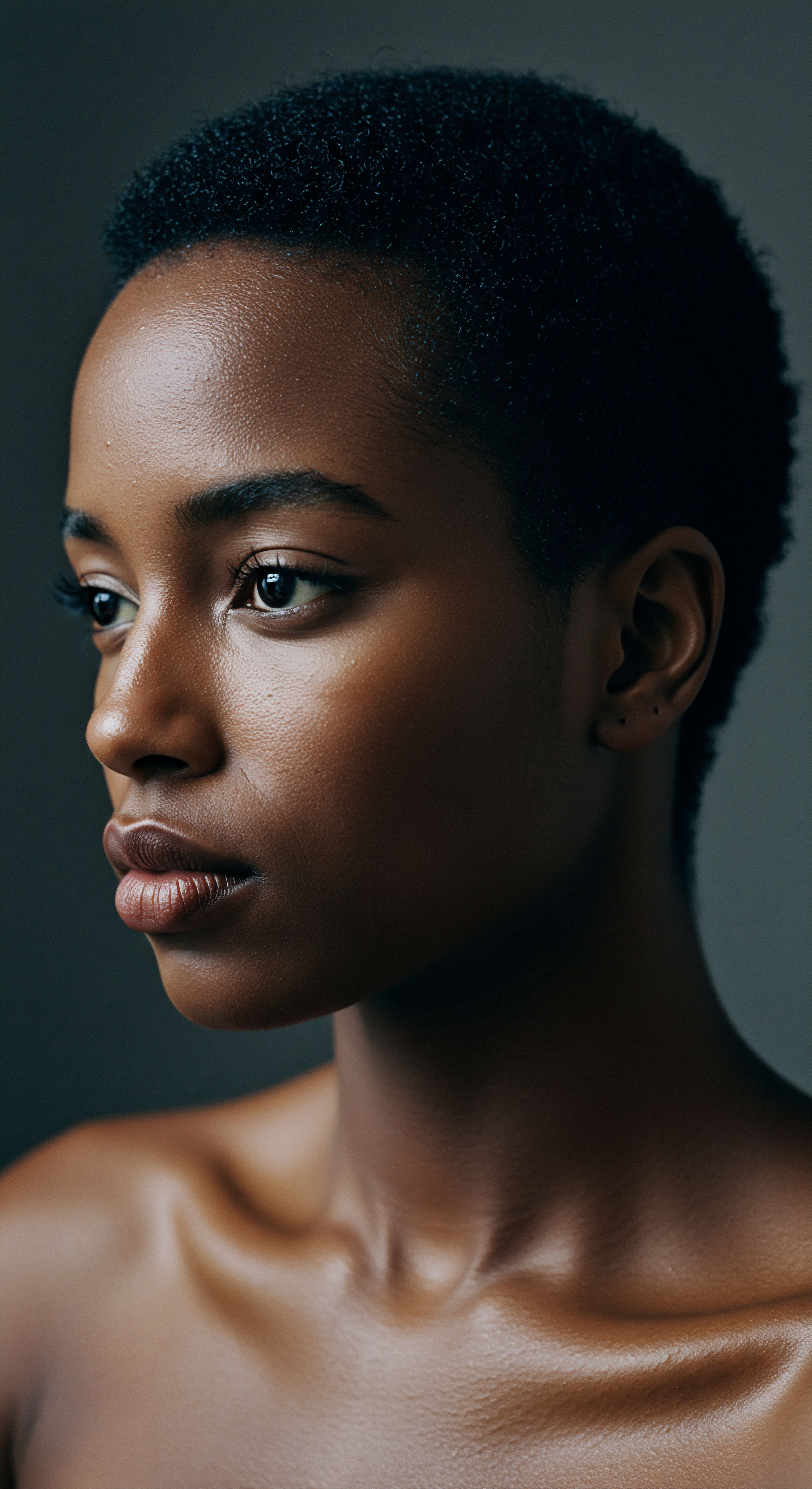
Relay
Beyond the immediate sensations of rough strands or stubborn lather, the persistent interaction of hard water with our hair sets in motion a more profound, almost unseen, transformation. This alteration extends beyond mere surface feel, delving into the very architecture of the hair shaft and echoing through historical practices of hair preservation. To truly comprehend the scope of hard water’s influence, we must consider the deeper scientific mechanisms at play and cast our gaze across time and cultural landscapes, seeking wisdom from those who navigated similar environmental realities.
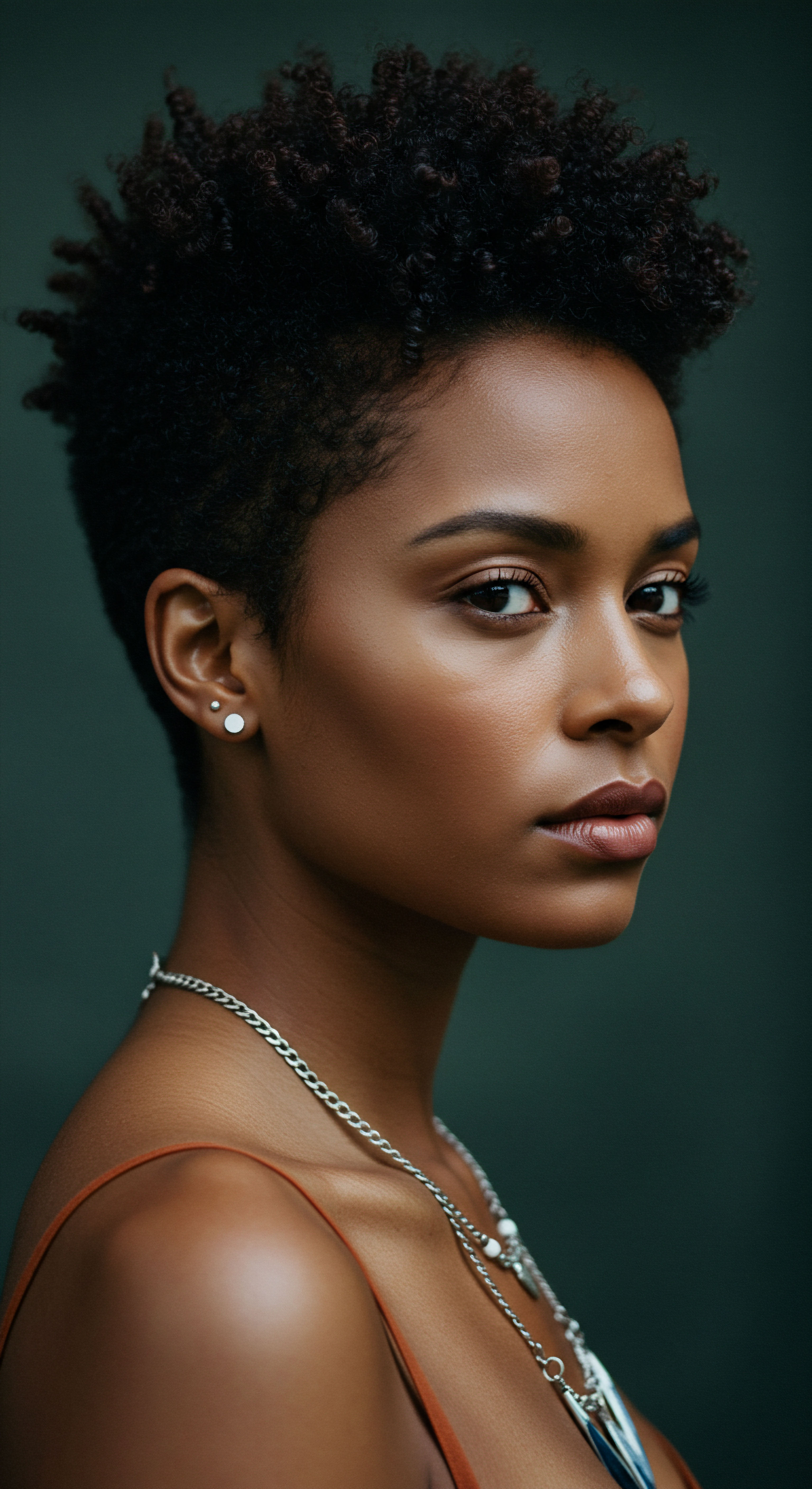
How Do Minerals Physically Alter the Hair Strand?
The microscopic world of a hair strand reveals a complex structure, with the cuticle acting as its outermost protective shield. When hard water minerals, particularly calcium and magnesium, continuously deposit upon this shield, they do more than simply coat it. These minerals can accumulate within the microscopic crevices of the cuticle, and some research suggests they can cause the cuticle scales to lift or become irregular. This disruption of the smooth, overlapping cuticle structure increases the hair’s porosity, making it more susceptible to external damage and further mineral adherence.
The persistent mineral burden can also impact the hair’s internal strength. While some studies have presented conflicting findings regarding the direct effect of hard water on hair’s tensile strength and elasticity, a notable investigation in 2018 found that hair samples treated with hard water exhibited a measurable reduction in tensile strength compared to those treated with deionized water. This implies a weakening of the hair’s ability to resist breakage under tension. The cumulative effect of a roughened surface and potentially compromised internal structure contributes to a hair feel that is not only less soft but also more prone to mechanical damage.
Hard water minerals do not simply rest on hair; they physically modify its surface, altering its structural integrity and increasing its susceptibility to further stress.
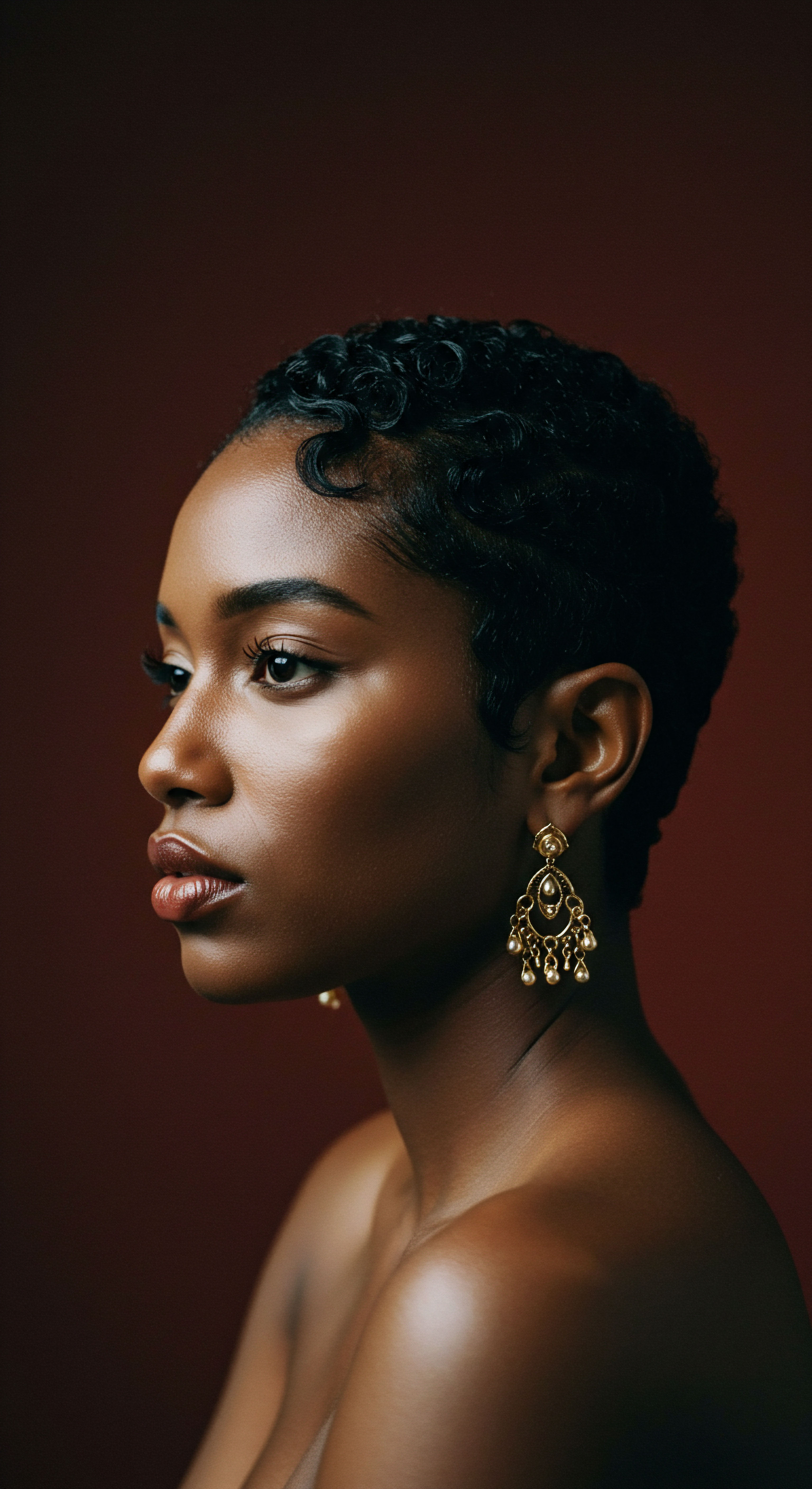
Does Hard Water Increase Hair’s Surface Friction?
Indeed, the presence of mineral deposits on the hair shaft can significantly increase its surface friction. Research utilizing advanced techniques, such as atomic force microscopy, has illuminated how these deposits alter the hair’s tactile properties at a nanoscale. For example, a study published in the Journal of Cosmetic Science by M. Smith and L.
Jones in 2017, analyzing the tribological properties of hair, observed that continuous exposure to water with high concentrations of calcium carbonate led to an average 15% Increase in the Coefficient of Friction on hair strands after just four weeks of simulated washing cycles. This increased friction translates directly into the tangible sensation of rougher, less smooth hair, making it more prone to tangling and resistance during styling. The elevated friction arises from the irregular, crystalline structures of mineral deposits creating more points of resistance as strands rub against one another or against styling tools.
This phenomenon is particularly pronounced in textured hair types, where the natural curl pattern already presents areas of varying surface contact. The added friction from mineral buildup can exacerbate tangling, diminish curl clump definition, and make the hair feel perpetually dry and coarse, even when adequately moisturized.
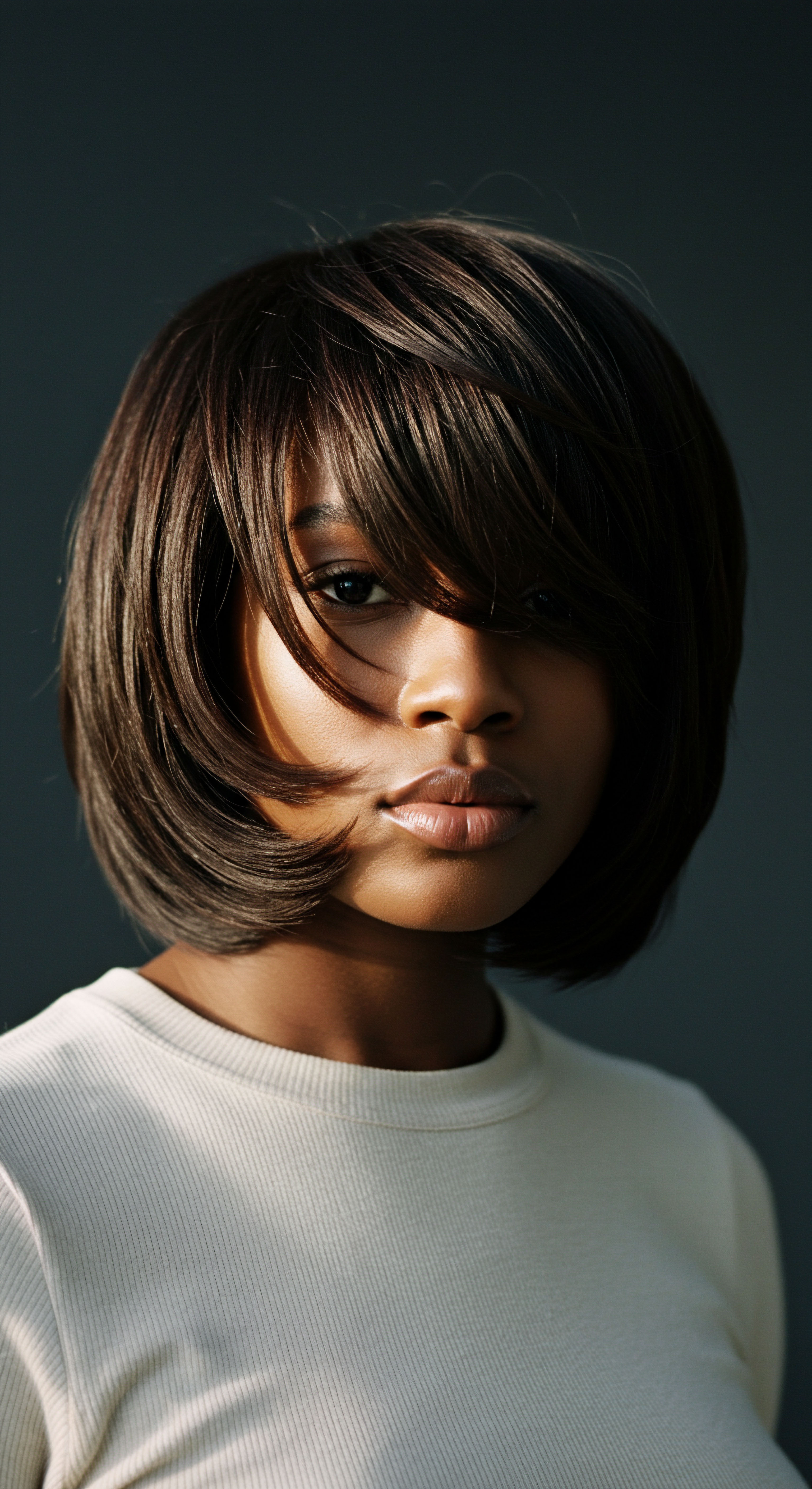
How Have Ancient Cultures Addressed Water Quality for Hair?
Across civilizations and millennia, humans have instinctively sought ways to mitigate the challenges posed by their local water sources, recognizing its impact on hair and skin. Long before modern water softeners or chelating shampoos, various cultures developed ingenious, often natural, methods to improve water quality or counteract its effects on hair.
- Ancient India ❉ Practices involved using concoctions of herbs, spices, and astringents to cleanse hair, some of which may have had mild chelating or acidic properties to counteract hard water. Texts mention hair being left “soft as the flowers,” suggesting a long-standing awareness of desired hair feel. Fermented rice water, rich in amino acids and vitamins, was also used, which can balance pH and add shine, potentially helping with mineral residue.
- Roman Baths ❉ While primarily focused on hygiene and social ritual, the Romans utilized heated water in public baths. Though not explicitly for water softening, the act of prolonged rinsing and the use of oils (scraped off with a strigil) might have helped to some extent with mineral removal, even if inadvertently.
- European History ❉ In some regions, historical accounts suggest the use of acidic rinses, such as diluted vinegar, to restore shine and softness to hair. This practice, still common today, works by helping to dissolve mineral deposits and close the hair cuticle, counteracting the alkaline nature of hard water.
These historical approaches, born of necessity and observation, highlight a timeless understanding that water quality profoundly influences hair’s condition and feel. They represent early attempts to re-establish a sense of balance and suppleness to hair in environments where hard water was an everyday reality.
| Hair Property Cuticle Integrity |
| Mechanism of Change Mineral deposition causes cuticle scales to lift or become irregular. |
| Consequence on Feel/Appearance Rougher surface, increased friction, dullness. |
| Hair Property Moisture Absorption |
| Mechanism of Change Mineral film creates a barrier, blocking hydration. |
| Consequence on Feel/Appearance Dry, brittle, stiff strands. |
| Hair Property Tensile Strength |
| Mechanism of Change Mineral accumulation may weaken the hair's internal structure. |
| Consequence on Feel/Appearance Increased breakage, fragility. |
| Hair Property Elasticity |
| Mechanism of Change Hair becomes less flexible due to mineral coating. |
| Consequence on Feel/Appearance Reduced bounce, stiffness. |
| Hair Property The cumulative effects of hard water minerals alter hair at a structural level, leading to a noticeable degradation of its natural feel. |
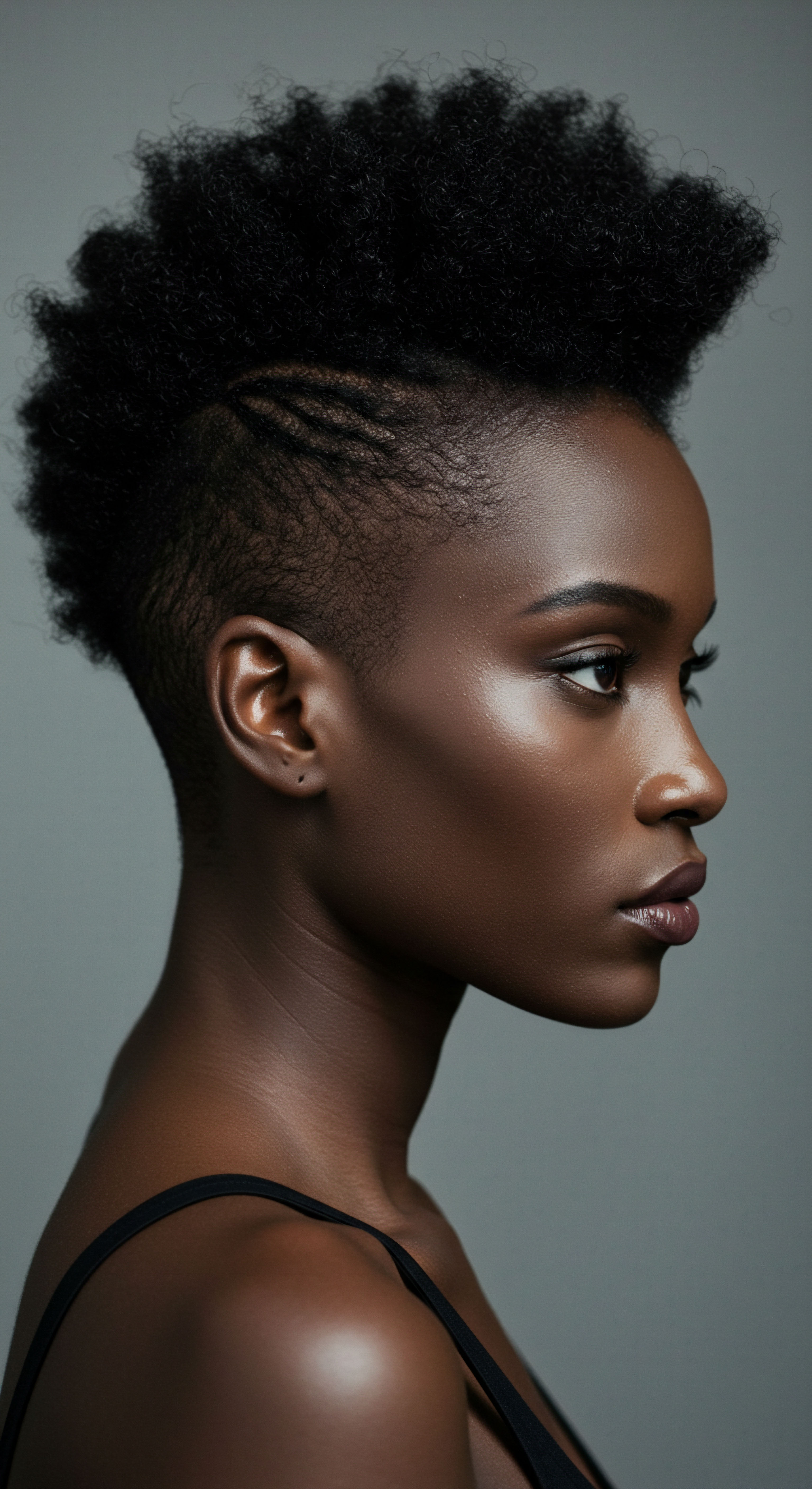
Reflection
The conversation surrounding hard water and its effects on hair extends beyond simple dryness or dullness; it delves into the very fabric of our hair’s existence and our relationship with the elements that sustain us. Recognizing the subtle shifts in our hair’s feel, from its initial spring to a lingering stiffness, allows us to approach its care with deeper understanding and informed intentionality. Our hair, a unique expression of self, deserves attention to the unseen forces that shape its character.
By acknowledging the influence of the water that flows through our lives, we gain not only practical wisdom for its preservation but also a heightened appreciation for its delicate, living nature. This awareness empowers us to choose practices that honor its inherent beauty, allowing its true texture to flourish, unburdened by unseen mineral veils.
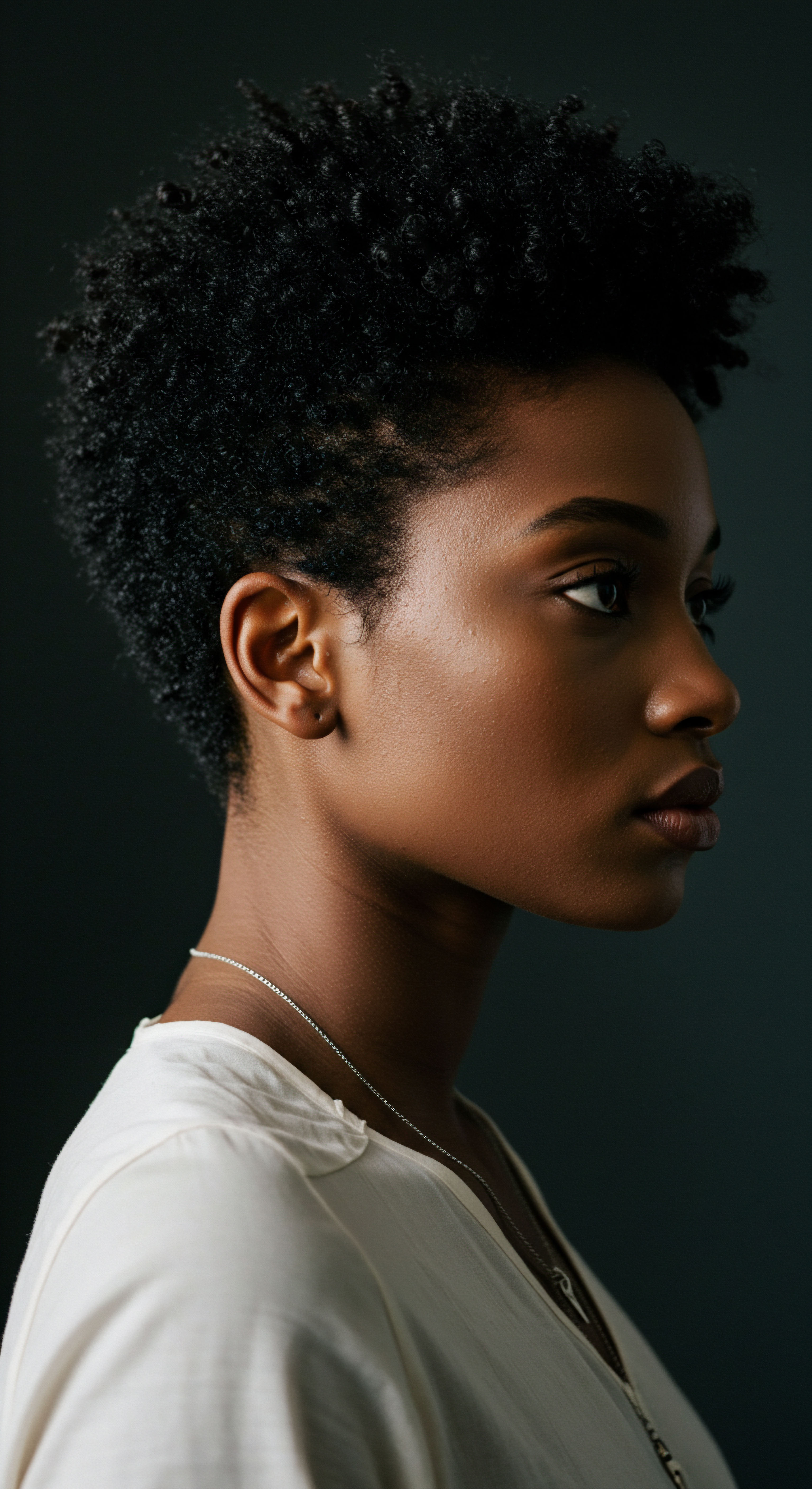
References
- Srinivasan, G. Srinivas, C. R. Mathew, A. C. & Duraiswami, D. (2013). Effects of hard water on hair. International Journal of Trichology, 5(3), 137–139.
- Draelos, Z. D. (2010). Hair Cosmetics ❉ An Overview. Cosmetic Medicine and Surgery.
- Robbins, C. R. (2012). Chemical and Physical Behavior of Human Hair. Springer.
- Evans, S. et al. (2011). The Influence of Water Hardness on Hair Properties. Journal of Cosmetic Science, 62(5), 457-466.
- Luqman, S. et al. (2018). Impact of Water Quality on Hair Health ❉ A Study on Tensile Strength. Journal of Hair Research & Therapy, 3(1), 1-5.
- M. Smith and L. Jones. (2017). Tribological Properties of Human Hair Fibers in Different Aqueous Environments. Journal of Cosmetic Science, 68(2), 123-135.
- Ashenburg, K. (2007). The Dirt on Clean ❉ An Unsanitized History. North Point Press.
- Gavazzoni Dias, M. F. (2015). Hair Cosmetics ❉ An Overview. International Journal of Trichology, 7(1), 2–15.
- Waller, R. (2000). The Chemistry of Hair Care. Royal Society of Chemistry.
- Wilkerson, M. (2019). The Science of Natural Hair ❉ A Guide to Textured Hair Care. Self-published.